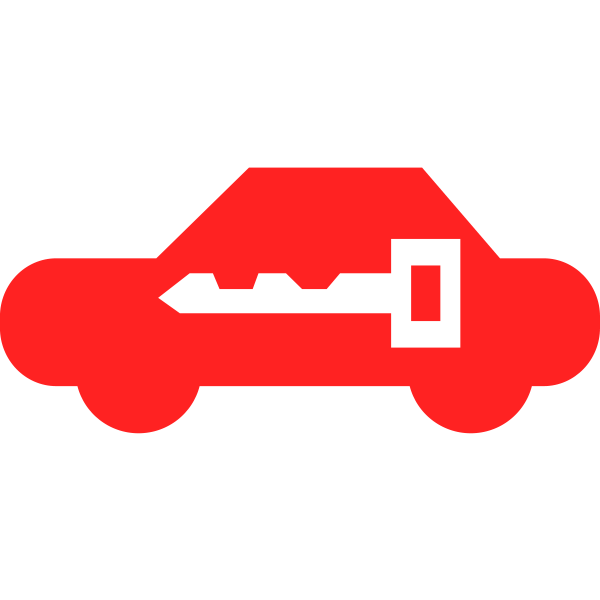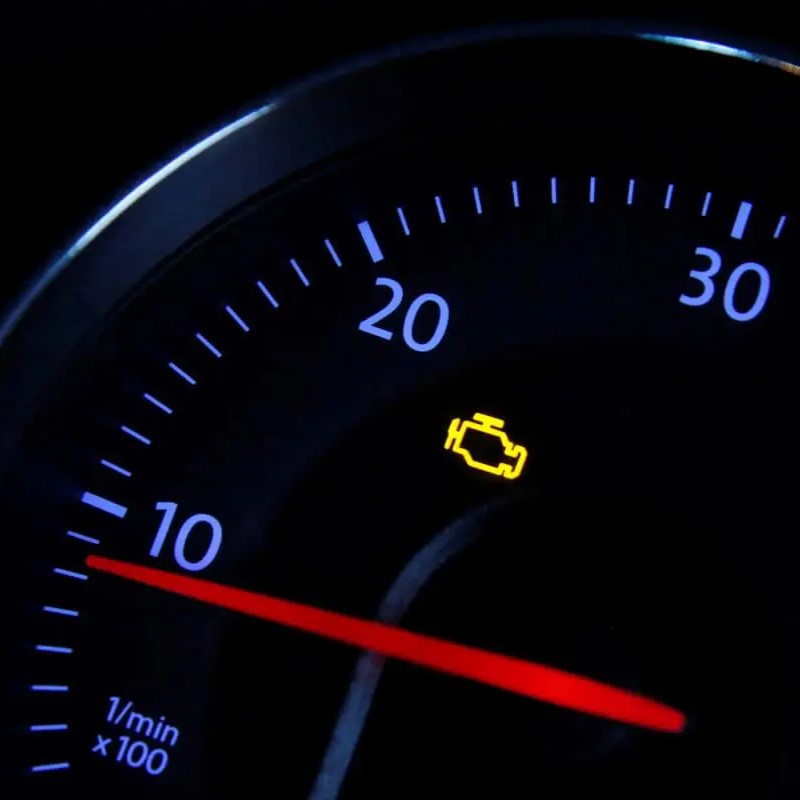A healthy car runs smoothly, predictably. So, when your vehicle starts shaking and the dreaded check engine light illuminates your dashboard, it’s natural to feel a surge of worry. But before you panic, take a deep breath. This combination of symptoms, while certainly concerning, doesn’t necessarily spell doom for your car. Let’s delve deeper into what a check engine light paired with car shaking might signify and the steps you can take.
Deciphering the Check Engine Light
The check engine light, universally recognized by its orange engine symbol, is your car’s way of communicating an issue within its complex system. Modern vehicles rely on a network of sensors that monitor various engine functions like fuel mixture, emissions, and spark timing. When a sensor detects a deviation from normal parameters, it triggers the check engine light, acting as an alert for potential problems.

The Importance of the Light’s Behavior
The severity of the issue can sometimes be gleaned from the check engine light’s behavior. A solid illumination typically indicates a less urgent problem, while a flashing light suggests a more critical issue requiring immediate attention. In the case of car shaking alongside the light, it’s best to err on the side of caution and get your car checked by a qualified mechanic as soon as possible.
Understanding Car Shaking
Car shaking, also known as vibration, can manifest in various ways – a slight tremor at idle, a pronounced wobble while accelerating, or a shudder throughout the vehicle. The underlying cause can range from relatively minor to more serious. However, when combined with the check engine light, it often points towards an engine misfire.

Engine Misfire: The Likely Culprit
An engine misfire occurs when one or more cylinders fail to combust fuel properly. This can happen due to a variety of reasons, including:
- Faulty Spark Plugs: These components are responsible for igniting the air-fuel mixture in each cylinder. Worn-out or damaged spark plugs can lead to weak or inconsistent spark, causing misfires.
- Ignition Coil Issues: The ignition coil supplies the high voltage needed to create spark at the spark plugs. A malfunctioning coil can disrupt this process, resulting in misfires.
- Fuel Injector Problems: Fuel injectors deliver the precise amount of fuel to each cylinder. Clogged or faulty injectors can cause too much or too little fuel to be delivered, leading to misfires.
- Sensor Malfunctions: Sensors play a crucial role in regulating engine functions. A faulty sensor can send incorrect information to the engine computer, causing misfires.
Other Potential Causes of Shaking
While engine misfire is a common culprit for car shaking with a check engine light, it’s not the only possibility. Here are some other potential causes to consider:
- Engine Mounts: These rubber components support the engine and absorb vibrations. Worn-out mounts can cause the engine to move excessively, leading to shaking.
- Uneven Tire Wear: Improperly inflated or excessively worn tires can cause a vibration that translates into the steering wheel and throughout the car.
- Drivetrain Issues: Problems with the transmission, driveshaft, or axles can also manifest as shaking.

What To Do When Your Car Shakes and the Check Engine Light Comes On
If you experience car shaking accompanied by the check engine light, here’s what you should do:
- Pull Over Safely: Don’t ignore these warning signs. Find a safe location to pull over as soon as possible and turn off the engine.
- Avoid Further Driving: Continuing to drive with a misfire can damage the catalytic converter, a costly component responsible for reducing emissions.
- Consult Your Owner’s Manual: Your car’s manual might offer specific advice based on the check engine light’s behavior and any additional symptoms you’re experiencing.
- Schedule a Mechanic Appointment: Don’t put off getting your car checked by a qualified mechanic. They can diagnose the root cause of the problem and recommend the appropriate repairs.
Diagnosis and Repair
A mechanic will typically begin by retrieving the trouble code stored in the car’s computer by the check engine light. This code provides valuable clues about the issue. They will then perform a visual inspection and may also run additional tests to pinpoint the exact problem.
Depending on the diagnosis, the repair might involve replacing faulty spark plugs, ignition coils, or fuel injectors. In some cases, cleaning clogged components or fixing a faulty sensor might be sufficient. More extensive repairs, like replacing engine mounts or addressing drivetrain issues, might be necessary in other situations.

Prevention is Key
While car troubles are inevitable, there are ways to minimize the risk of encountering a shaking car and a lit check engine light. Here are some preventive measures:
- Regular Maintenance: Sticking to your car’s recommended maintenance schedule is crucial. This includes timely oil changes, spark plug replacements, and air filter cleaning. These routine checkups help identify and address potential problems before they escalate into major issues.
- Quality Fuel: Using high-quality fuel keeps your engine running smoothly and efficiently. Lower-grade fuels can cause problems with combustion and contribute to engine deposits.
- Driving Habits: Aggressive driving habits like rapid acceleration and hard braking can put extra stress on your car’s engine and drivetrain. Opt for a smoother driving style to promote engine health and longevity.
Importance of consulting a certified mechanic or dealership
While the previous article explained the potential causes of a shaking car with a check engine light, it’s crucial to understand why consulting a certified mechanic or dealership is your best course of action. Here’s why:
Expertise and Training: Certified mechanics possess extensive knowledge and training specific to diagnosing and repairing modern vehicles. They stay updated on the latest troubleshooting techniques and possess the tools necessary for accurate diagnoses. Dealerships often have factory-trained technicians familiar with the intricacies of the specific car makes and models they sell.
Diagnostic Tools: Modern car repairs often rely on specialized diagnostic tools and software. Certified mechanics and dealerships have access to this advanced equipment, enabling them to delve deeper into the problem and pinpoint the exact cause of the shaking and check engine light.
Repair Reliability: Attempting DIY repairs on complex car problems can be risky. Certified mechanics have the experience and know-how to perform repairs correctly and efficiently, ensuring a lasting solution. They also typically use high-quality parts, further enhancing the reliability of the repair.
Warranty Considerations: If your car is still under warranty, taking it to a certified mechanic or dealership is essential. DIY repairs or repairs at unauthorized shops can void your warranty, leaving you responsible for the full cost of repairs.
Preventative Measures: Beyond fixing the immediate issue, a skilled mechanic can also identify potential problems before they escalate. They can recommend preventative maintenance to keep your car running smoothly and avoid future breakdowns.
Peace of Mind: Having a certified mechanic or dealership diagnose and fix the problem brings peace of mind. You can rest assured knowing the repairs are done right, using the correct parts, and following manufacturer guidelines.
While the cost of consulting a professional might seem higher initially, it often proves more cost-effective in the long run. They can prevent further damage, ensure proper repairs, and potentially save you money on unnecessary parts or future repairs due to incorrect fixes.
Finding a Qualified Mechanic:
- Reputation: Look for mechanics with positive online reviews and good word-of-mouth recommendations.
- Certifications: Ensure the mechanic holds relevant certifications from organizations like the Automotive Service Excellence (ASE).
- Dealership Expertise: Consider dealerships for specific car make and model expertise, especially if your car is still under warranty.
Don’t underestimate the value of a certified mechanic or dealership when dealing with a car shaking and a check engine light. Their expertise, tools, and experience are invaluable in getting your car back on the road safely and reliably.

The Takeaway
A shaking car with an illuminated check engine light shouldn’t be ignored. While it might not be a catastrophic situation, it signifies a problem that needs attention. By understanding the potential causes and taking prompt action, you can minimize damage to your car and ensure safe driving conditions. Remember, preventive measures like regular maintenance and mindful driving habits go a long way in keeping your car running smoothly and avoiding costly repairs down the road.
If you have any further questions or concerns about your specific situation, it’s always best to consult a qualified mechanic. They can provide a personalized diagnosis and recommend the most suitable course of action for your car.





